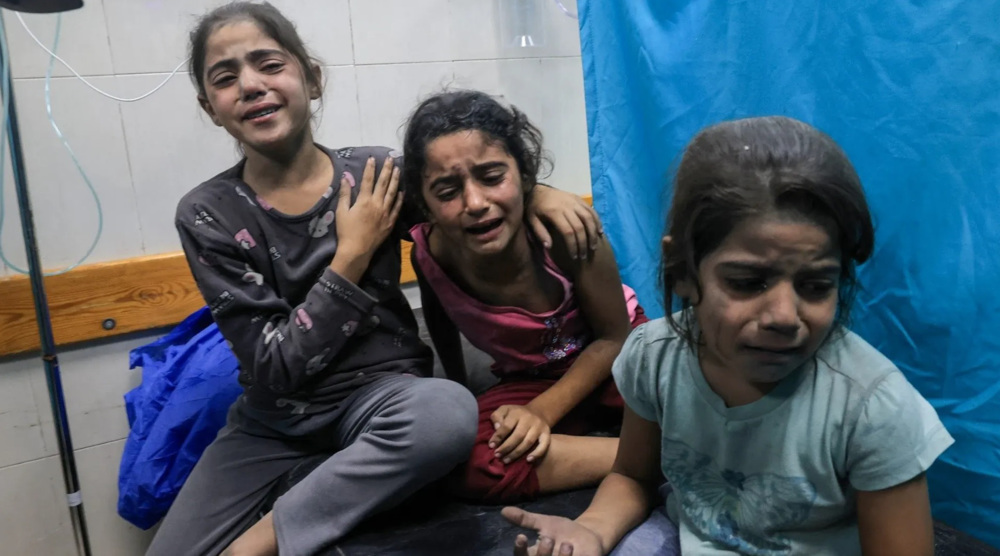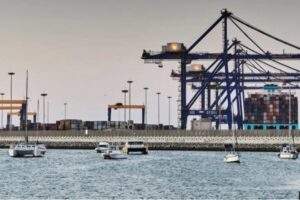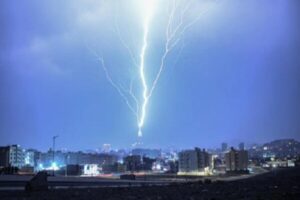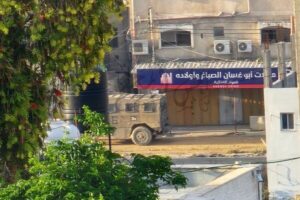Data reported by the charity organization ‘Save the Children’ shows the number of children killed in the Gaza Strip as a result of Israel’s ongoing aggression has exceeded annual figures related to global conflicts over the past four years.
The international NGO says that Israel’s brutal military attack against Gaza, which began on October 7th has so far killed more than the annual number of children killed in armed conflicts globally in each of the past four years.
According to multiple reports, corroborated by the Palestinian health ministry as well as the Defence for Children International (DCI) NGO, one child is being killed in Gaza every 10 minutes.
UN human rights monitors said in the press release on October 18th that since the launch of the indiscriminate bombing campaign against Gaza, an average of 100 children have been killed every single day.
Hundreds of children are still trapped under the rubble of residential buildings targeted during Israel’s strikes on Gaza, hence, they have not been rescued yet, which implies that the actual death toll could be higher.
The UN Office for the Coordination of Humanitarian Affairs has revealed that at least one thousand children are missing under the rubble in Gaza.
The ongoing siege and the relentless bombardment are impeding search and rescue operations.
Gaza has become a graveyard for children. It’s a living hell for everyone else. And yet the threats to children go beyond bombs and mortars.
I want to speak briefly now on on two of those: water and trauma.
The more than 1 million children of Gaza have a critical water crisis. Gaza’s water production now, its capacity is at 5% of its daily output.
So child deaths to dehydration, particularly, infant deaths to dehydration are a growing threat.
James Elder, UNICEF Spokesperson
The UN Committee on the Rights of the Child has also issued a statement saying grave human rights violations against children are mounting by the minute in the Gaza Strip.
The statement asserts that armed conflict harms children first and foremost and has lifelong effects on their physical and mental health, their development, and ultimately the enjoyment of all their rights. Children are also harmed when they survive but lose parents and other family members and friends and also witness catastrophic events.
The committee has called for an end to the devastating harm that’s been leveled on the children who live in occupied Palestinian territory, calling on all parties to protect all children and to provide all the necessary medical and protective support, including psychological support to begin the long process of overcoming the consequences of these grave violations.
Then, of course we have the trauma when finally the fighting stops, the cost to children and their communities is going to be borne out for generations to come.
Before this latest escalation, before it, more than 800,000 children in Gaza, that’s three quarters of the entire child population of Gaza, were identified. as needing mental health and psychological support.
Again, that’s before this latest nightmare.
James Elder, UNICEF Spokesperson
In a desperate move, Palestinian children and their parents have started writing their names on their bodies in black ink so that they can be identified in hospitals if they are killed or injured in Israeli strikes. Children pulled from the wreckage of buildings are sometimes unrecognizable due to their grave injuries. Heartbreaking photos of children lying on steel trays inside Gaza hospital morgues, with their sleeves or trouser legs pushed up to reveal their names, have been going viral on social media.
The UN Children’s Fund UNICEF said in a report last Tuesday that almost every child in Gaza has been exposed to deeply distressing events and trauma.
We’re talking about children witnessing their parents, their families, their sisters and brothers being killed in front of them. Their houses, their communities, disappearing in a split second. This has a big toll on their emotional, psychological and mental health.
Salim Oweis, Communication Officer, UNICEF
The report highlighted that children are experiencing widespread destruction, relentless attacks, displacement, and a severe shortage of essential necessities, such as food, water, and medicine.
The report added that without stable electricity and fuel supplies, essential facilities like hospitals, desalination plants, and water pumping stations, cannot work properly.
It’s interesting, I mean, we have a formula at the United Nations that is applied to virtually every other conflict situation. But when it comes to the situation in Israel and Palestine, there’s a different set of rules apparently and that’s, I think, a big source of my frustration.
Where is the transitional justice process? Where is the UN protection force to protect all civilians? Where is the tribunal for accountability?
Where is the action on the part of the Security Council, The only mechanism in the United Nations that has enforcement to ensure protection in the occupied territories?
Craig Mokhiber, Former UN Human Rights Official




